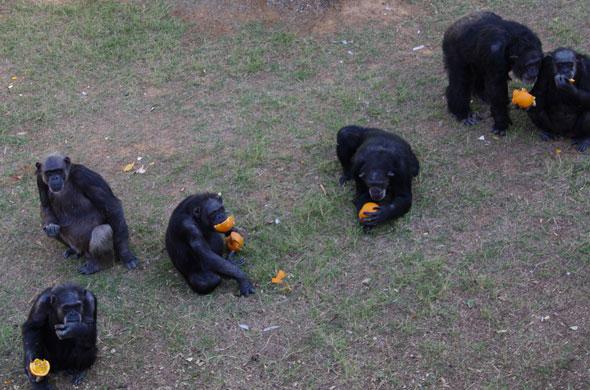In November 2015, Francis Collins, director of the National Institutes of Health, announced that his agency would cease all support for invasive research on chimpanzees. It had already decreed in 2013 that it planned to retire all but a colony of 50 chimps, which had been set aside for future biomedical research. With this announcement, those 50 reserve chimps would also be retired. In all, the NIH planned to send 308 chimps to a sanctuary known as Chimp Haven in Louisiana, where they would be free to roam in open-air yards and spacious, forested enclosures, never to be experimented on nor infected with lethal diseases ever again.
Not much of that grand vision has come to fruition. In 2015, just seven chimps actually made it to Chimp Haven and at least 24 have died awaiting transport, the Washington Post reported in February. The rest are still in government labs, with many of them ill or dying, even though they are no longer being experimented on. The Post reported this week that 382 of the 561 NIH-owned or supported chimps remained in labs as of Jan. 15, citing a 44-page report by the U.S. Government Accountability Office. Of those, 154 are infected with HIV or hepatitis, 144 have another unspecified chronic illness, and 144 are considered “geriatric.”
“Some chimps have grown elderly and died there, in pens averaging 25 square feet,” reports the Post.
The NIH’s decision late last year to end invasive research on chimps concluded years of soul-searching within the agency over whether primate research was ethically justified. For animal rights activists, it was a time of great rejoicing. Since 2011, studies had found that using these animals for biomedical research was unnecessary. Moreover, chimpanzees—which had been whittled to numbers in the wild of fewer than 300,000—had recently been designated as federally endangered. “When you put those things together, it seems inescapable,” Collins said at the time. “We find no evidence that there is a need to continue to do research of an invasive sort on chimpanzees, not now and not going into the future.”
But the effort to transport the chimps has been “complicated” and will likely take two more years, says Cathy Willis Spraetz, president of the Chimp Haven sanctuary. Even back in 2015, there were hints that the logistics of getting the chimps to a sanctuary—and making space for them—was going to be a problem. At the time, Collins warned that the entire process could take several years. As Sara Reardon wrote in Nature:
That law presents major problems for NIH, as Chimp Haven is nearly out of space. If the agency decides that more retirement facilities are needed, it will need to find the money to pay for them. Collins says that the NIH is still discussing how to house its retired chimps, especially since the animals’ eventual deaths will make sanctuary space unnecessary.
The molasses-slow pace of federal bureaucracy may not be the only force to blame here. Managers at the three labs where 308 chimps remained as of October—the Alamogordo Primate Facility at the Holloman Air Force Base in New Mexico, the Texas Biomedical Research Institute in San Antonio, and the Michale E. Keeling Center for Comparative Medicine and Research in Bastrop, Texas—have expressed disapproval of the NIH’s decision to end all chimp research.* “I think it’s a very unfortunate thing,” said Christian Abee, director of the Keeling Center. If they were to be retired, Abee said that chimps would be better off staying put in labs, rather than risking the traumatic experience of transport.
Whatever the case, the onus is on NIH to reach a consensus on what retirement course would be best for the welfare of these chimps, who have endured years of captivity and experimentation. As the GAO put it: “A clear implementation path is needed.” The sooner, the better.
*Correction, April 22, 2016: This post originally misspelled Michale E. Keeling’s first name.
